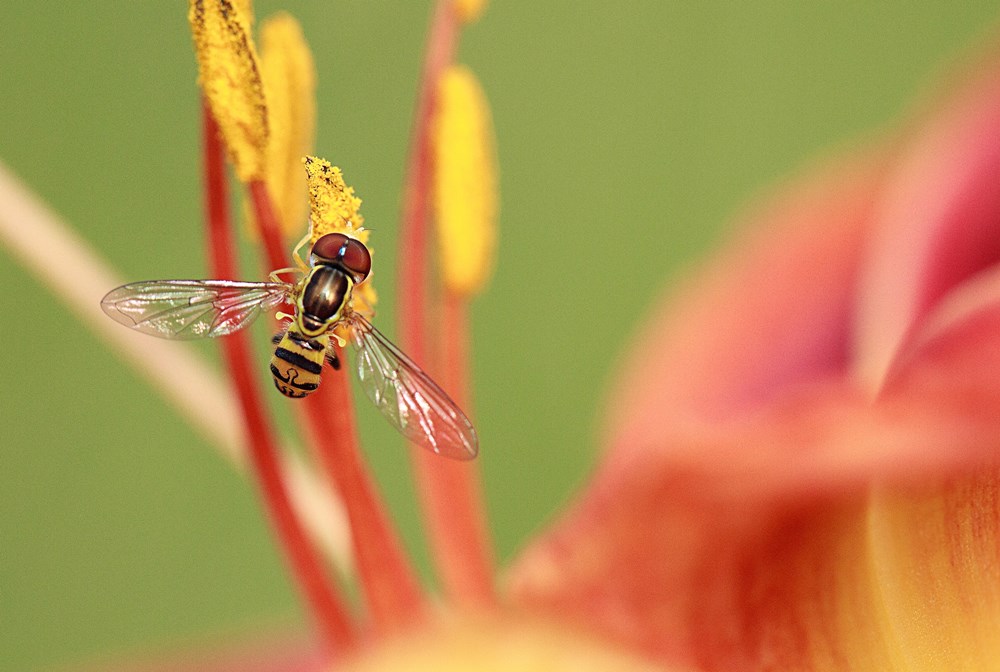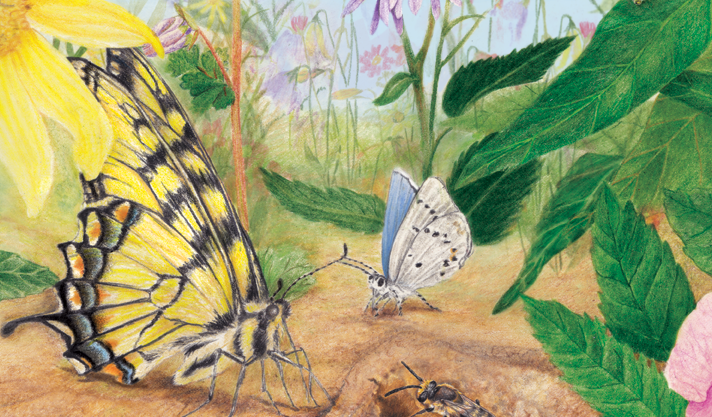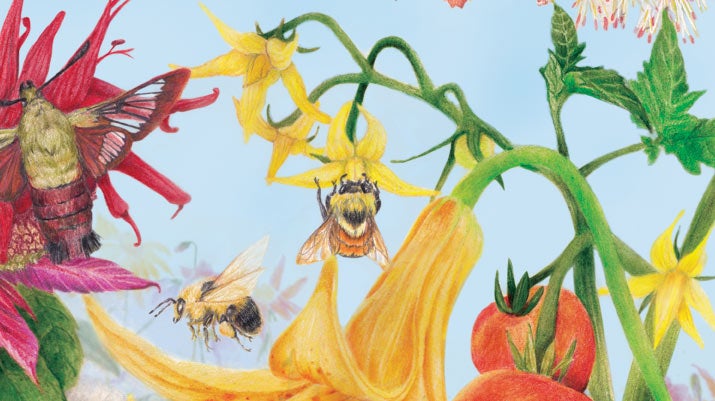
SCIENTIFIC NAME
Syrphidae Family
DESCRIPTION
This very large family has great variation in looks. The most commonly seen ones, however, tend to be approximately 8–12 mm long with yellow and/or orange and black on the abdomen. All members of the Syrphidae family have a distinctive squiggle or false vein (spurious vein) running through the middle of the wing.
RANGE
Widespread distribution across Canada.
HABITAT
Hover flies can occur anywhere there are pollen and nectar rich plants.
DIET
Adults feed on a wide variety of pollen- and nectar-rich blooms. Some larvae eat decaying plant or animal matter while others prey on garden pests such as aphids.
BEHAVIOUR
undefinedPRIMARY ECOSYSTEM ROLES
- Important pollinator
- Insect control (some larvae are predatory)
- 0
- 1








